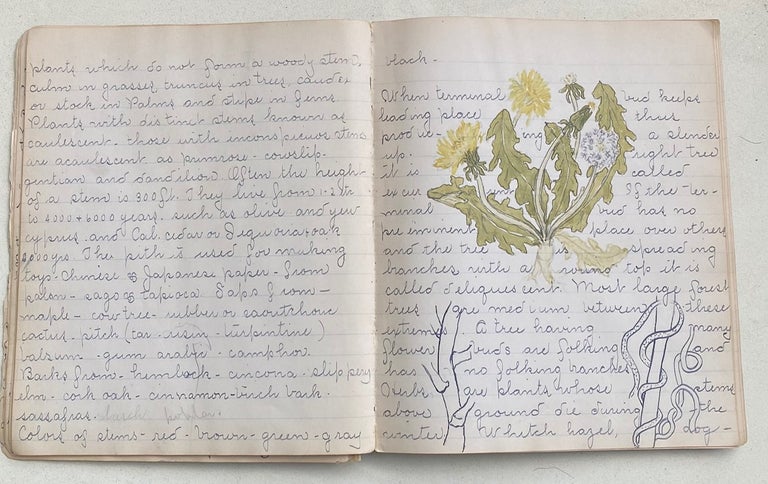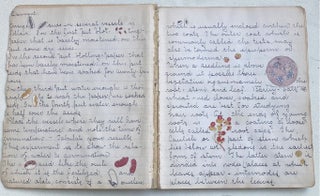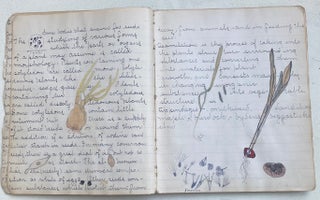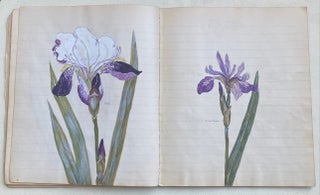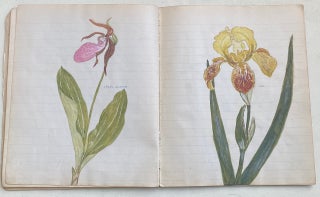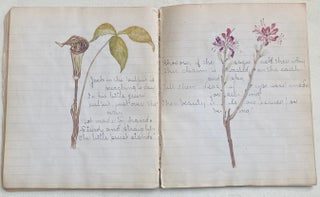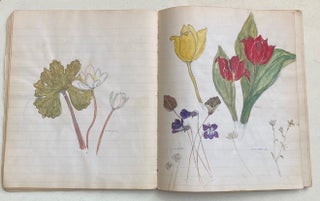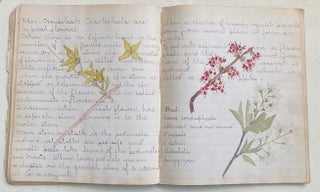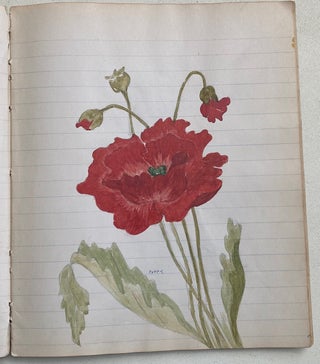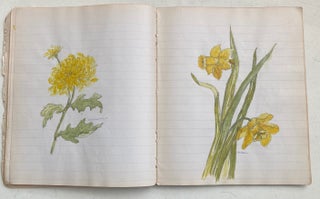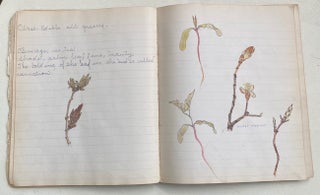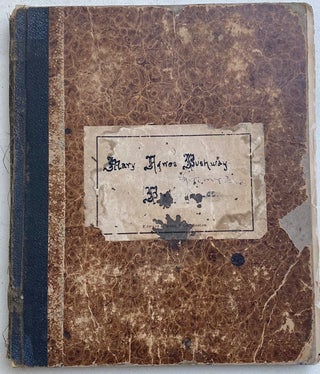EARLY 1900s NOTEBOOK WITH COLOR PLANT SKETCHES
Item #757
Lovely marble-covered notebook with a black spine measuring 7 x 8.25”. The label on the front cover bears the name Mary Agnes Bushway, along with "Botany book." An internet search reveals that she was probably from Haverill, MA, where she graduated high school in 1908. The dates 1904 and 1908 both appear in the notebook. Within, Mary has written notes on plants, including information on an experiment with seedlings, roots, stems, the fern, the flower, the fruit, and miscellaneous notes. What makes this notebook so special are the carefully detailed illustrations and sketches that Mary has sprinkled throughout, often writing her notes around her artwork. She includes drawings of seeds, sketches of parts of a plant, as well as paintings of flowers such as poppy, jonquil, wild roses, blackeyed susan, sweet pea, iris, and lady’s slipper. The notebook is about two thirds full, with a few empty pages between each new section of notes.
Example note entry:
The Root
The primary roots originate from lower ends of caulicle. Secondary roots are those branching from primary. Roots that come from unusual places are called adventitious roots. Roots that form in air are aerial roots and some live in water, and still others living in the earth, live on nourishment that they steal from other plants. The mature root system contains one main portion much larger than any of its branches called tap root. Such a root if much thickened would assume shape as a carrot-turnip or radish. Roots of grass are threat like and are called fibrous roots if such roots become thickened they are known as fascicled roots.
The parsnip, beet, carrot, & turnip are biennial plants - for they produce seed during the second summer or fall after they are planted.
The length of winter wheat roots is found to be seven feet. If oak roots are cut from the stem and strung to-gether they would measure about 150 feet in length. Oak tree roots have been found penetrating horizontal tunnels in a mine at a depth of 50 feet. Roots are used to hold the plant in the ground - Hold soil in place - To feed the plant and also used for food. Some that are used as food are Flag-root - Snake root - ginger root - sasaphras horse radish. Some are used as the Indians used them to bind their canvas -as the larch and tamarack. Root hairs are [illegible] for the leaves. The colors of roots are - white, gray, yellow, red - green - orange.
The root is often called the descending axis. It goes downward to reach moisture. The root gets about 15 different substances from the earth. It gets three volitil and 12 mixed. The three volitil are nitrogen - hidrogen - oxygen all of which are gasses. A root is made up of a main root, the collum, place where root joins stem, branches, branchlets fibrous - fibrule - root hairs - spongeous. The root grows just back of the end. Under ground stems are onions - most bulbs - tulips - sweet flag - potatoes -
Above ground stems are - banyan - mangrove - Poison Ivy - English Ivy - sugar cane and Indian corn.
Medicinal roots - gold thread - arrow root - ginger root - dandelion - liquorice - sassafras swamp root - snake root - sweet flag - blackberry - ladies’ slippers.
Editable - horse radish - beet- radish yarm - turnip - parsnip - carrot - artichoke.
The root starts before the plumule to gather the nourishment from the earth. The root is also called the descending axis and radicle. Underground portions nourishes above ground portion of plant. Parasites - some grow in air - others in ground and feed on roots - also some on roots. Some growing on branches and feed on air and called epithites. Roots absorb nourishment and moisture through root hairs.
Price: $350.00

